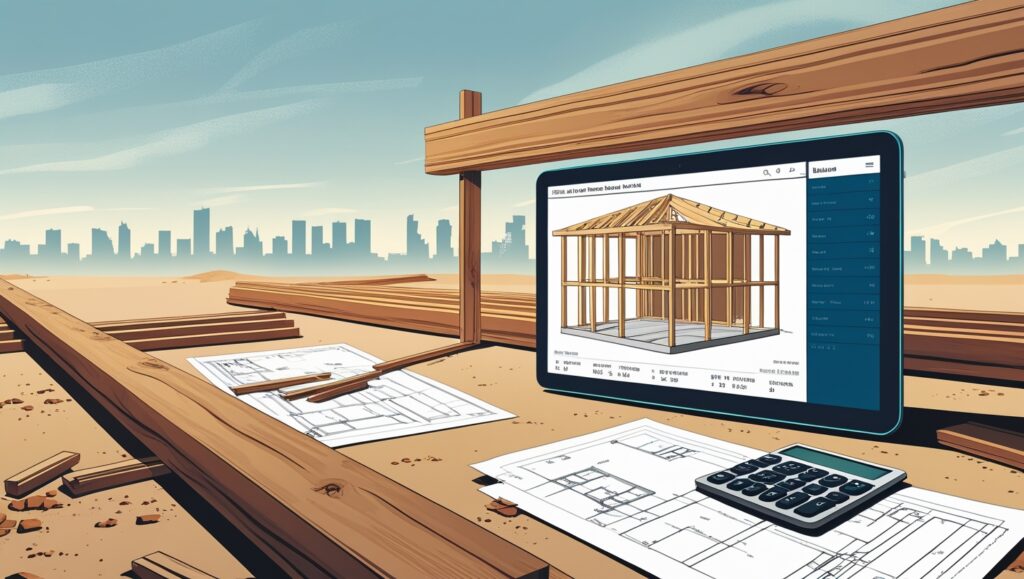Every construction project begins with numbers. Before a single board is cut or a nail is driven, there’s a complex equation unfolding behind the scenes — the takeoff. In particular, lumber takeoffs can make or break a project’s budget. When done right, they reduce material waste, tighten cost estimates, and streamline timelines. But when miscalculated, they lead to costly overruns, unused stockpiles, or worst of all, delays. In today’s fast-paced construction environment, precision isn’t a luxury — it’s a necessity.
Let’s walk through how optimizing lumber takeoffs isn’t just about counting materials — it’s about building smarter.
The Hidden Costs of Poor Takeoffs
Imagine planning a residential build. The framing crew arrives, but halfway through, you realize the estimate was off — you’re short on 2x4s and overstocked on plywood. Now, you’re scrambling to order more, losing precious time and incurring rush delivery fees. This scenario is all too common in the construction industry and typically stems from outdated manual takeoff processes or relying on generic templates that don’t reflect actual build specs.
That’s where Lumber Takeoff Services step in. These specialized services use trained estimators and advanced software to analyze architectural drawings, pinpoint precise quantities, and reduce human error. By integrating digital accuracy into traditional craftsmanship, they ensure your project starts with a solid foundation — on paper and on-site.
Why Lumber Optimization Matters More Than Ever
Lumber prices are notoriously volatile. From global supply chain disruptions to climate-influenced logging restrictions, wood is becoming less predictable and more expensive. In such a climate, even minor overestimations can lead to significant financial strain. Over-ordering not only eats into your budget but also increases storage needs and risk of material damage. Under-ordering, on the other hand, halts production and frustrates clients.
The solution? Takeoffs that are not only precise but optimized — tailored to the exact cut lengths, waste allowances, and framing techniques of your project.
The Technology Behind Accurate Takeoffs
Modern takeoffs are no longer confined to clipboards and calculators. Estimating software now integrates with CAD and BIM models, pulling real-time measurements and recognizing framing patterns to produce hyper-accurate counts. These tools can flag potential material waste, highlight cost-saving alternatives, and even suggest layout optimizations to reduce cuts and joins.
For example, an algorithm might detect that using 10-foot studs instead of standard 8-footers could reduce scrap by 12% across a multi-unit build. These are the types of insights that only technology-powered takeoffs can provide — insights that directly translate into savings.
Reducing Waste with Smarter Planning
Material waste isn’t just bad for your bottom line; it’s a sustainability issue. As green building practices gain traction, contractors are being held to higher environmental standards. An optimized lumber takeoff directly contributes to lean construction practices by:
-
Minimizing excess ordering
-
Reducing jobsite clutter
-
Lowering disposal costs
-
Limiting rework and error corrections
It’s not about cutting corners — it’s about precision and purpose.
Real-World Impact: Case of a Mid-Size Residential Builder
Take the case of a mid-sized residential builder in Oregon. Prior to optimizing their takeoffs, they were losing an estimated $12,000 annually in unused lumber. After partnering with a takeoff service that integrated their floor plans into a digital system, their waste dropped by 40% within six months. More importantly, they started finishing projects on average five days ahead of schedule, simply because materials were arriving in the right quantities at the right time.
This isn’t an isolated success. Across the industry, smarter takeoffs are driving better project outcomes, from tighter budgets to stronger client trust.
Tips for Optimizing Your Lumber Takeoffs
1. Go Digital
Manual methods leave room for guesswork. Transition to digital takeoff software or collaborate with professionals who already use it.
2. Account for Waste — Intelligently
Don’t just add a blanket 10%. Evaluate each section of the build and assign waste factors based on complexity and material variability.
3. Collaborate Early with Suppliers
Some suppliers offer pre-cut solutions if they have accurate takeoffs early. This can reduce jobsite labor and cutting waste.
4. Review with Your Framing Crew
The people who actually do the work often notice patterns and mistakes missed in the office. Their feedback is invaluable.
5. Reassess After Each Project
Use past project data to fine-tune future estimates. Optimization is an evolving process, not a one-time fix.
When to Outsource Your Takeoffs
Not every contractor has the time or in-house expertise to perfect their own takeoffs. Outsourcing to professionals offers several advantages:
-
Speed: Estimators can turn around detailed takeoffs faster, freeing up your internal resources.
-
Accuracy: With years of experience and top-tier tools, professional services spot nuances in plans that generic tools may miss.
-
Scalability: Whether you’re managing one home or an entire development, outsourced takeoffs can scale with your workload.
Ultimately, outsourcing lets you focus on building — while experts handle the math.
Building a Smarter Future, One Takeoff at a Time
The construction industry is evolving, and so are the expectations. Clients want transparency, efficiency, and sustainability. Material suppliers demand precise orders. Project managers crave consistency and control. All of these needs converge at one critical point: the takeoff.
By treating lumber takeoffs as a strategic function — not just a pre-construction formality — contractors can gain an edge in a competitive market. Whether it’s reducing costs, hitting deadlines, or simply building with less waste, optimization isn’t just about better projects; it’s about better business.
In a world where every board and every buck counts, mastering your takeoffs could be the smartest move you make.





